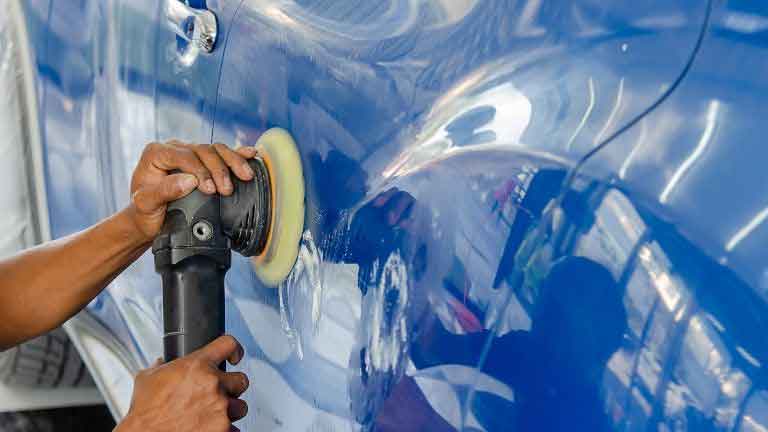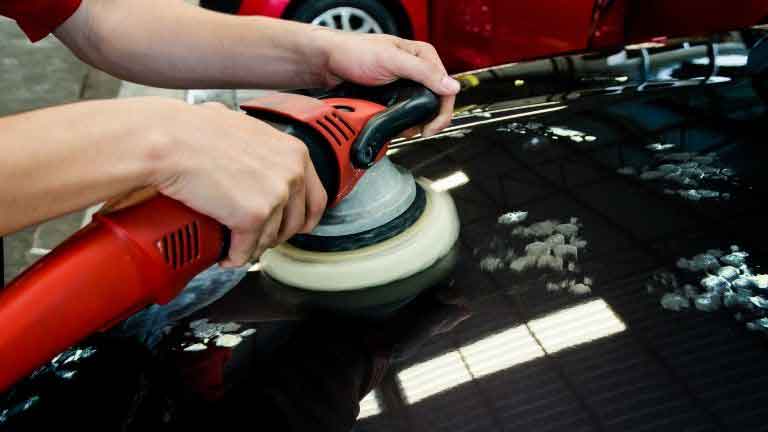Sanding is the process of removing materials from surfaces using an abrasive. There are two main types of sanding: wet and dry. Wet sanders use water to cool the surface they’re working on, while dry sanders rely on air or a vacuum to do the same thing. Which type is better? It depends on what you’re trying to achieve!

In this article, we’ll see the differences along with the advantages and disadvantages of using wet and dry sanding. Stay with us!
What is Dry Sanding?
Dry sanding is the process of removing materials from surfaces using an abrasive. These are often used on wood, metal, or plastic. Dry sanders use natural air to cool down the surface that they’re working on and vacuums are used to absorb any dust that’s created by the material being removed.
What is Wet Sanding?
Wet sanding is a process that involves the use of water for cooling and dust removal. Wet sanders are often used on auto body work and other metal surfaces. The abrasive is mixed with water to make it more effective before being applied onto a surface using an electric sander, which minimizes any friction between the object and the tool.
Differences Between Wet Sanding and Dry Sanding
There are many differences between dry sanding and wet sanding. Have a look-
You Need Different Machine for Wet Sanding
Wet sanders are different from dry ones. They are specifically made to be waterproof as you know, water is the enemy of any electronics. In most cases, wet sanding is done by air-powered sanders where you don’t need to worry about water getting inside of the machine.
These machines are more expensive than the regular dry sanding machines, hence, DIY use of these machines is rare.
You’ll have to Use Special Sandpapers for Wet Sanding
Wet sanders use a special type of paper that is water-resistant. Regular papers will get ruined because they absorb the water. Plus, regular sandpaper or sanding pads are made for using dry sanders and they are supposed to heat up while sanding which is not the case in wet sanding.
Wet sanding minimizes the heat by utilizing the liquid and ensures that the surface becomes shiny.
Wet Sanding Gives you Shiny Finish
Wet sanding gives a shiny finish, unlike dry sanders which leave tiny scratches on the surface. It is recommended for use in auto detailing jobs and other finishing tasks where you are aiming at a glossy surface.
Wet Sanding Works Best on Metal Surfaces
While dry sanding works well both on wood, plastic, and metal surfaces, you’ll get the best result of wet sanding when use on metal surfaces. That’s the reason why auto detailers prefer wet sanding over dry sanding for finishing jobs. They simply work best.
Wet Sanding is More like Finishing
Wet sanding is much more like finishing, while dry sanding helps you remove scratches and other imperfections.
In wet sanding, the liquid acts as a lubricant that reduces friction between your tools and the surface of the material being worked on. This gives a cleaner finish to work with than in dry-sanding which leaves tiny scratches on the surface.
The liquid also helps remove any dirt, grease, or oil from the surface that could get caught on the object being sanded by trapping it in a thin film of water.

Dry Sanding is Faster But Results in a Rough Finish
Wet sanding is slow. It’ll take 3X more time to accomplish the same result you could have achieved with dry sanding.
Dry sanding, on the other hand, is faster and gives you more control over your work. It also leaves behind sharp edges and give a rougher finish to materials than wet sanding because of the increased friction that dry sanding causes. However, the dry sanded surface can be smoothed out using wet sanding techniques.
You’ll have to Use Different Techniques for Wet Sanding
While it is best to use circular motion in dry sanding, you should go with straight motion in wet sanding. That’ll eliminate the scratches left behind the dry sander and give you a perfectly smooth finish.
Wet Sanding Helps Minimize Dust in the Air
Fine particles of dust are a problem in any type of sanding process and wet sanding eliminates the production of them. However, you’ll still want to protect yourself with necessary safety apparels like goggles and masks.
Dry Sanding is Good For Wood
Wet Sanding is best used on hard materials like marble, concrete, and metal while dry sanding is better suited for softer materials such as wood.
Wet Sanding Requires More Preparation than Dry Sanding
It is easier to get into dry sanding as it doesn’t require more than a sander. In the wet sanding process, you’ll need to choose the job site carefully as the work process is messier than dry sanding. You’ll have a hard time managing the water inside a cordon unless you prepare the job site beforehand.
Is wet sanding better than dry sanding?
It depends on what you want to accomplish. Both are great in their respective field. If you want a fast and easy way to smooth out an uneven surface, there is no contender against dry sanding.
On the other hand, if you are looking for a shiny finish on your car body, you’ll require perfect wet sand.
What is the advantage of wet sanding?
The main advantage is you get a new-looking shine on your car body which is not possible to achieve with dry sanding. Plus, there is less dust in the air which helps to breathe better at work and reduces the risks of having respiratory issues.
Can you wet sand with regular sandpaper?
Wet sanding is a popular technique for smoothing and removing imperfections in metal surfaces. While you may see regular sandpaper working on wet sand, it won’t last.
You’ll require wet sandpaper for this as dry sandpapers will start degrading a lot faster than you’d expect.
What grit sandpaper is best for wet sanding?
The finer grit, the better in wet sanding. However, it depends on your specific work as what grit sandpaper should you utilize for wet sanding. Generally speaking, 500-800 is a range where we usually go for a finishing task with wet sanding.
Can you use wet sandpaper dry?
If you have a job that just needs to be done but can’t wait for the regular sandpaper to arrive, you can use wet sandpaper to sand the surface.
As wet sandpapers are usually expensive than regular sandpaper, you won’t love to spend more than needed. So, go with regular sandpaper for dry sand and use wet sandpapers for wet sanding.
Conclusion
Wet sanding is a great way to finish your job and make it look like you put in the work. If you’re looking for an easy, quick solution that still looks clean and professional, dry sanding might work as well.
Which type of project are you working on? This will decide which type of sanding should choose to do.